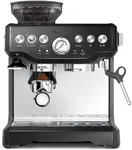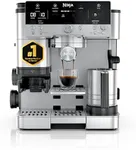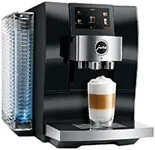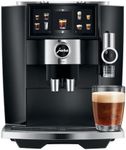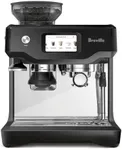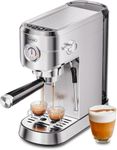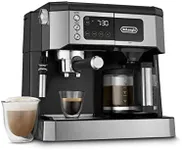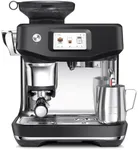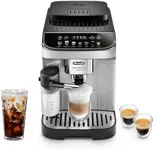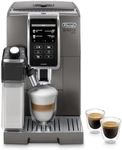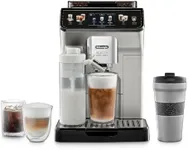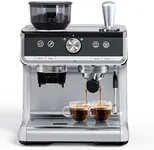Buying Guide for the Best Home Espresso Machines
Choosing a home espresso machine can make a big difference in your daily coffee experience. The right machine will allow you to enjoy delicious espresso, lattes, and cappuccinos at home, but picking one can be tricky with so many options and features. It’s important to think about your coffee habits, how much time you want to spend making coffee, and how involved you want to be in the brewing process. Understanding the key specifications will help you match a machine to your needs and ensure you’re satisfied with your choice for years to come.Type of MachineThe type of espresso machine determines how much control you have over the brewing process and how much effort you need to put in. There are manual, semi-automatic, automatic, and super-automatic machines. Manual machines give you full control but require more skill and effort. Semi-automatic machines strike a balance, letting you control brewing time but automating water delivery. Automatic machines make brewing easier by timing the shot for you, while super-automatic machines handle everything from grinding to brewing with the push of a button. To choose the right one, consider how much you want to be involved—coffee enthusiasts may enjoy manual or semi-automatic, while those who want convenience should look at automatic or super-automatic options.
Boiler TypeThe boiler is responsible for heating water to the right temperature for brewing and steaming milk. Machines typically come with single boilers, dual boilers, or heat exchange systems. Single boilers require you to wait between brewing and steaming, which can slow things down if you like milk drinks. Dual boilers let you brew and steam at the same time, making them great for people who entertain or make lots of milky drinks. Heat exchange systems allow simultaneous brewing and steaming but use one boiler. Think about how many milk-based drinks you make and how quickly you want to prepare them—heavy users or latte lovers may benefit from dual boiler or heat-exchange models.
PressureEspresso machines force hot water through coffee grounds using pressure, usually measured in bars. The ideal extraction usually happens at nine bars of pressure. Most home machines advertise higher maximum pressures, but consistency is more important than a high number. A machine that delivers a steady nine bars ensures proper extraction for rich, flavorful espresso. For most users, focus on machines that are known for reliable and consistent pressure delivery instead of chasing the highest number.
Grinder IntegrationSome machines include a built-in grinder while others require a separate grinder. An integrated grinder saves space and can be more convenient, but can limit your future upgrade choices since the grinder and the machine are combined. If you want full control over your grind or plan to experiment with different coffees, a separate grinder offers more flexibility. Think about your available space and whether you value simplicity or the potential to upgrade each component separately.
Size and Water Tank CapacityThe physical size of the machine and the size of its water tank can affect where you can put it in your kitchen and how often you’ll need to refill water. Compact machines are easier to fit on small countertops, but may hold less water. Large machines can brew for several people without frequent refills, which can be useful for families or entertainers. Consider your kitchen space and how much coffee you plan to brew each day to choose a size and tank capacity that fits your routine.
Ease of CleaningRegular cleaning is crucial to keep your espresso machine working well and maintain good-tasting coffee. Some machines have self-cleaning functions or easy-to-remove parts, while others require more hands-on maintenance. If you want to minimize time spent cleaning, look for models that advertise easy cleaning features and accessible water tanks or brew groups. If you’re detail-oriented and don’t mind extra work, you might be fine with machines that require more regular upkeep.
Milk Frothing CapabilityIf you love lattes or cappuccinos, the milk frothing system is important. Some machines have manual steam wands that give you control over the texture of your milk, while others offer automatic frothing for convenience. Manual wands are great if you want to learn barista skills or fine-tune your milk texture, but there’s a learning curve. Automatic systems are quicker and more forgiving. Decide how important milk drinks are for you and whether you prefer learning a new skill or just want your milk frothed quickly and easily.
